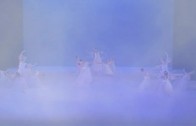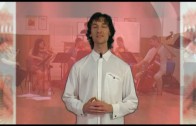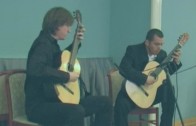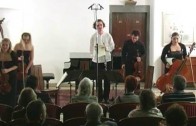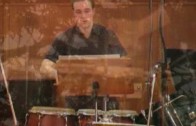The Ballet Les Sylphides – Chopiniana (Eng.)
 (30:30) You’re about to see the ballet Les Sylphides, also known as Chopiniana. This version was staged by Evelyn Téri after Mikhail Fokin and danced by the ballet students of the Conservatoire for Music and Ballet in Ljubljana. Let’s get to know a bit more about this particular ballet.
(30:30) You’re about to see the ballet Les Sylphides, also known as Chopiniana. This version was staged by Evelyn Téri after Mikhail Fokin and danced by the ballet students of the Conservatoire for Music and Ballet in Ljubljana. Let’s get to know a bit more about this particular ballet.
Les Sylphides is a short, non-narrative ballet blanc. Its original choreography was by Mikhail Fokin, with music by Frédéric Chopin orchestrated by Alexander Glazunov. Glazunov had already set some of the music in 1892 as a purely orchestral suite, under the title Chopiniana, Op. 46. In that form it was introduced to the public in December 1893, conducted by Nikolai Rimsky-Korsakov.
The ballet, often described as a “romantic reverie”, was at that time indeed the first ballet ever to be simply that. Les Sylphides has no plot, but instead consists of many white-clad sylphs dancing in the moonlight with the poet or young man. Les Sylphides is often mistaken for La Sylphide, which is a different ballet with a different story choreographed by August Bournonville.
Identifying the premiere of the fuller ballet poses a challenge. One might say that it premiered in 1907 at the Maryinsky Theatre in St. Petersburg as Rêverie Romantique: Ballet sur la musique de Chopin. However, this also formed the basis of a ballet, Chopiniana, which took different forms, even in Fokin’s hands. As Les Sylphides, what we consider the work was premiered by Sergei Diaghilev’s Ballets Russes on 2 June 1909 at Théâtre du Châtelet, Paris. The Diaghilev premiere is the most famous, as its soloists were Tamara Karsavina, Vaslav Nijinsky (as the poet, dreamer, or young man), Anna Pavlova, and Alexandra Baldina.
With this particular ballet, Fokin wanted to set different ideals that were popular in ballet at the time (and also today). He wanted the ballet to be more than just a display of a immaculate technique, physical expression of strength, muscular power and acrobaticism. He wanted it to be interpreted with a sense of pureness and richness of the inner expression of the soul.
You are kindly invited to watch the whole ballet and enjoy its’ miraculously gentle beauty …
